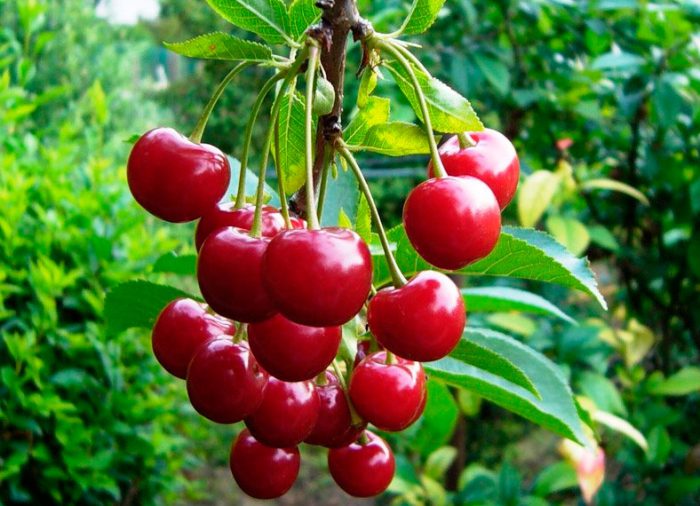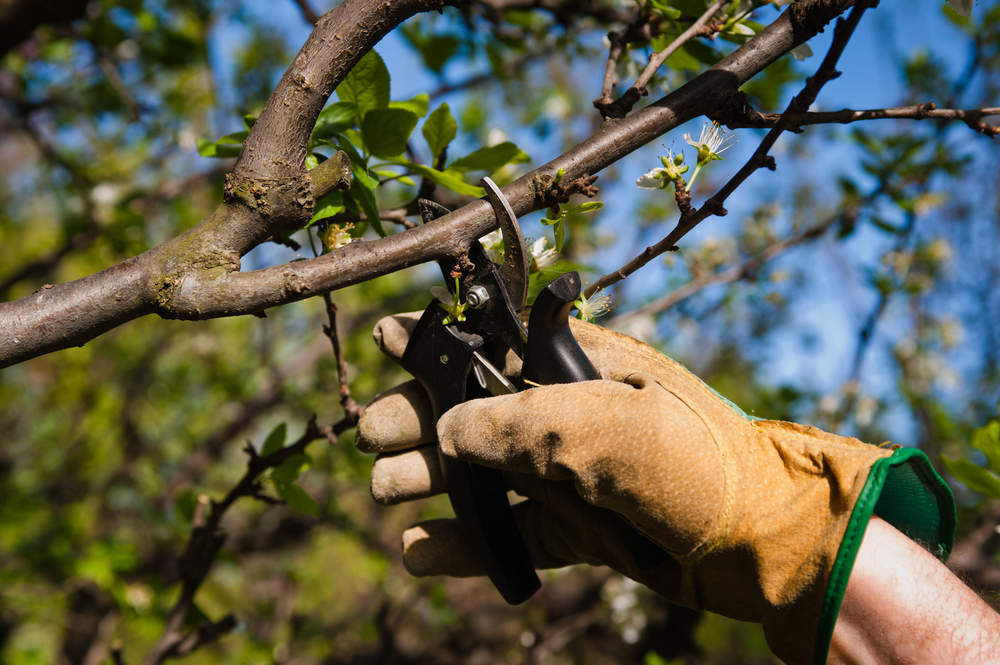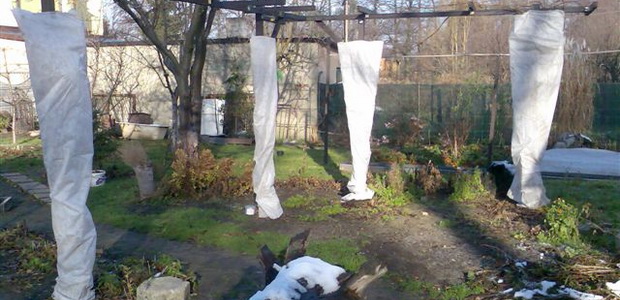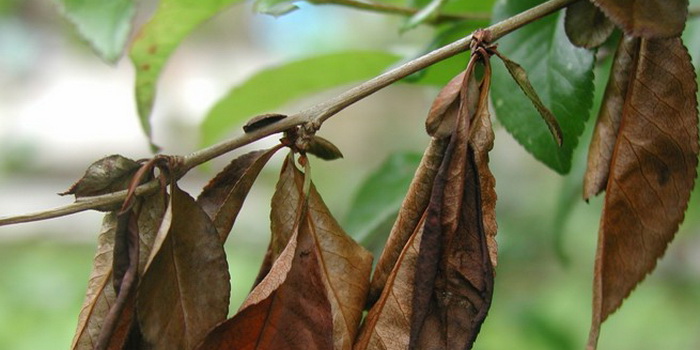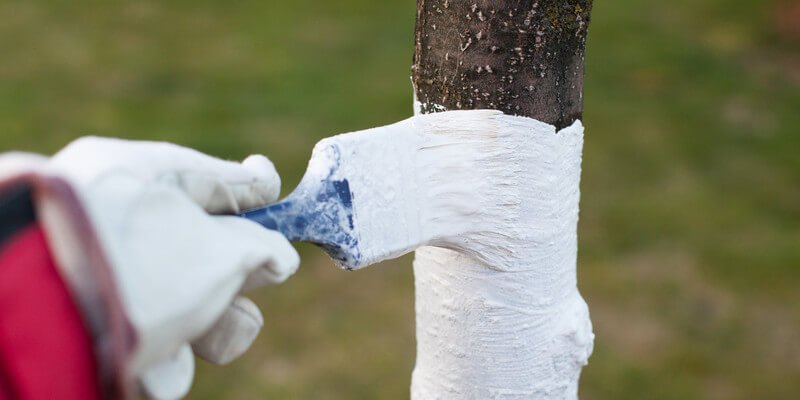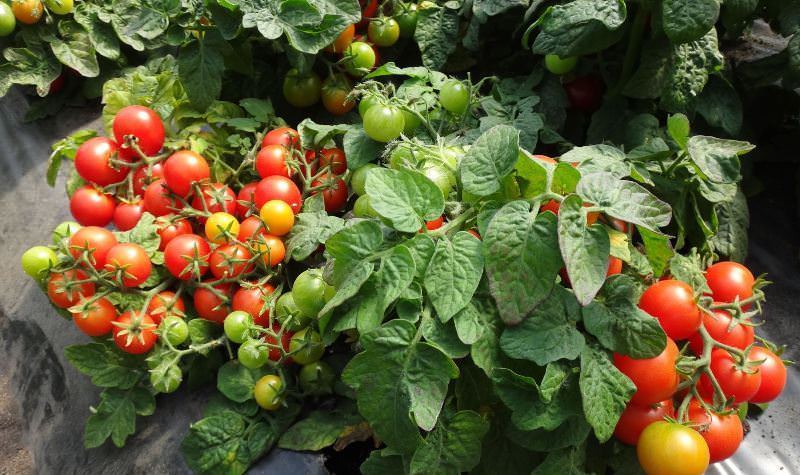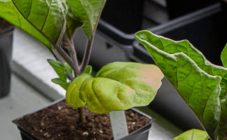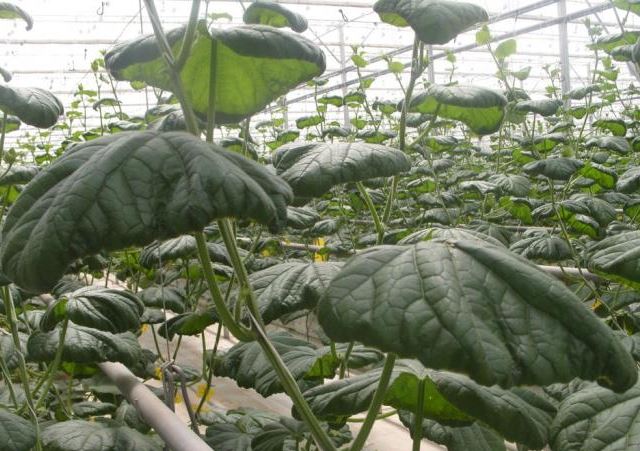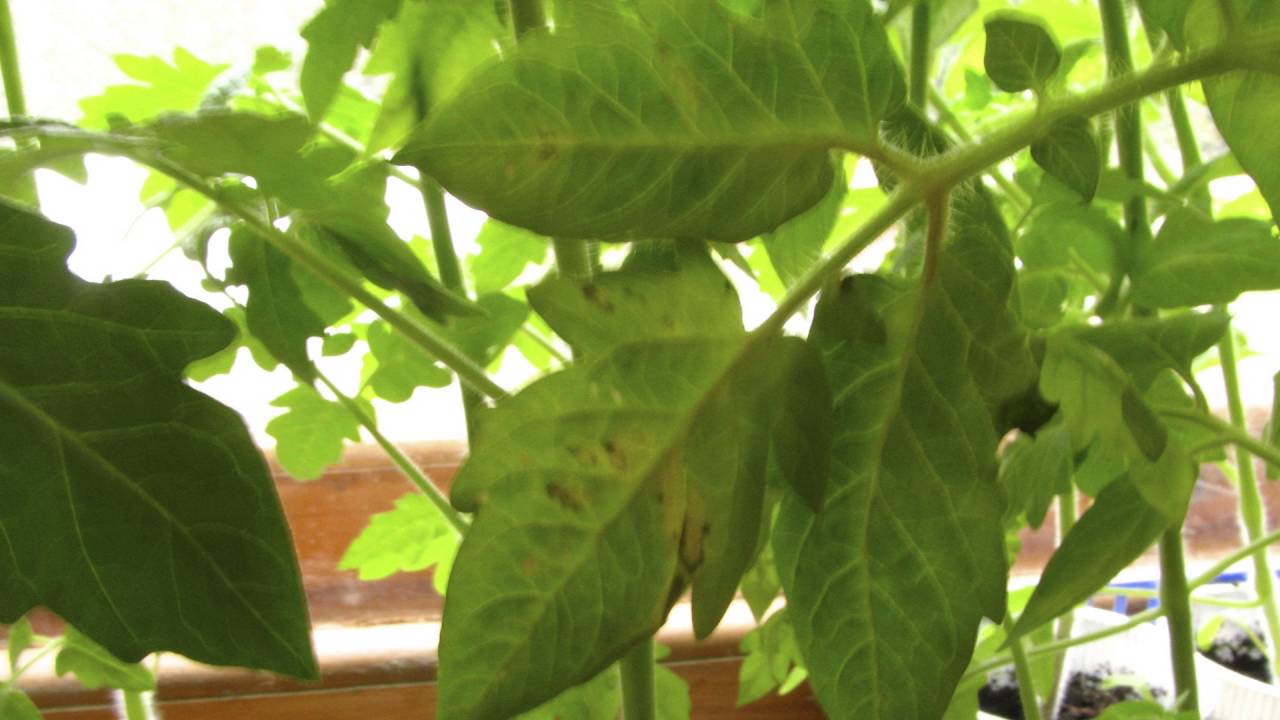Content:
The subgenus Cherry belongs to the genus Plum of the Pink family. The plant has been known for a long time and its popularity is easily explained. A person uses all parts of the plant: from tasty and healthy fruits to high-quality wood.
Basic information about culture
For the first time, a botanical description of cherries and sweet cherries (a kind of cherry) can be found in the works of the Greek Theophastus, dating back to the 4th century. BC. An attempt at a more accurate systematic description is given in the work "Herbarius" of the late 15th century. And in the countries of Asia Minor (the territory of modern Turkey), sweet cherry (one of the types of cherry) was known already in the 8th millennium BC.
The Latin name Viscum translates as "bird glue" or "sticky sap tree". About 60 species belong to the subgenus cherry. Among them, in addition to the usual and well-known to all ordinary cherries, there are also sweet cherries, laurel cherries, bird cherry, sakura.
The following took part in the creation of modern cultivated varieties of a garden plant:
- cherries;
- steppe cherry;
- magaleb cherry;
- felt cherry;
- ordinary cherry.
Cherries are short trees or shrubs that bloom with white or pink five-petalled flowers. In place of the flower, a drupe fruit is formed.
Cherries are an excellent honey plant, and insects collect nectar and pollen from a flowering plant. Fruits contain a large amount of organic acids, pectin substances, an impressive list of trace elements (copper, iron, manganese, zinc, cobalt, boron and others), macronutrients (calcium, magnesium, phosphorus, potassium) and vitamins (E, A, C, group B ). The berries have a sweet and sour taste and can be used in any form:
- fresh;
- dried;
- canned;
- frozen;
- boiled.
In cooking, leaves with tanning properties are in demand; liqueurs and balms are infused on the bones; stalks, bark, roots are used in traditional medicine recipes. Cherry wood is a valuable material with a number of interesting properties.
When growing cherries, it is important to keep in mind that most varieties require cross-pollination and if the tree grows alone, no fruit will appear on it. Therefore, if you are going to start a cherry on the site, you need to plan a place for 2-3 plants. It is worth noting that breeders around the world are working on this issue, and self-fertile cherry varieties already exist.
The selection offers more than 150 varieties of garden cherries. It is difficult to choose 1-2 varieties from such a variety. When choosing, you must consider:
- frost resistance;
- resistance to pests and diseases;
- yield;
- terms of fruiting;
- local peculiarities of climate, composition and structure of soil and water.
According to the terms of fruiting, the varieties are divided into early, mid-ripening and late-ripening. The southern regions are the most favorable for the development of any fruit tree. For areas of the middle lane, the popularity of the following varieties can be noted:
- Annushka.
- Dullness.
- Dessert Morozova.
- Chocolate girl.
- Lighthouse.
- Temaris.
- Nord-Star.
- Vladimirskaya.
- Turgenevka.
- Robin.
- Menzelinskaya.
- Kharitonovskaya.
In addition, felt cherry, a shrub form of the species, is also popular with gardeners. Possesses decorative appearance and edible fruits. From a bush, you can collect up to 12 kg of berries. Convenient for reproduction, as it gives root shoots.
Why don't leaves bloom on cherries
The popular belief that he planted trees and they will grow on their own is wrong. You can often hear: "Here, it grows in the forest, and nothing is done to him, but in the garden, in care and love, he gets sick and dies." In nature, trees also often die, and the agrocenosis differs significantly from the natural community. The health status of a cultivated plant on a site is influenced by numerous factors: from the climate, neighboring plants and animals, to agrotechnical methods carried out by humans.
But it happens also in adults. To understand how to save cherries from drying out, you first need to exclude the reasons associated with improper planting of a young tree. In order for the tree to gain strength and overwinter with minimal losses, certain conditions must be met when planting and in the first year of life in a new place:
- groundwater should not rise high (stagnant water destroys the tree);
- place in the south side of the garden (southwest);
- humus, ash and nitrogen fertilizer were introduced during planting;
- the landing pit was at least 60x60x60;
- the root collar is not buried and does not rise high above the ground;
- during the season, organic fertilizing was carried out at least 4 times;
- the seedling is treated against pests and diseases;
- the plant was properly trimmed.
In the event that the tree was not monitored, the planting was carried out with violations, by the end of the growing season the seedling will not be able to gain enough strength, and may freeze out. Despite the fact that cherry belongs to frost-resistant plants, especially since a large number of varieties have been bred that can withstand low temperatures, freezing of this culture is a frequent occurrence. The fact is that cherries are not as afraid of low temperatures as their sudden changes. This is what is typical for the climate of middle and northern latitudes. The reasons that can lead to freezing of plants are listed below.
Improper watering
Watering trees is necessary in the absence of precipitation. Watering is relevant in the southern regions. Closer to the north, the need for it disappears, if the summer is not dry. Nevertheless, it is recommended to water the fruiting cherries 3 times per season and make sure that the soil does not dry out. Excess water in the second half of summer can lead to the fact that the growing season will lengthen, the tree will grow and the wood will not mature on new shoots. Low winter temperatures will have a detrimental effect on such shoots, and the buds on them will freeze and will not wake up.
Illiterate pruning
When carrying out this operation, it is necessary to take into account the type of fruiting shoots. If fruits are formed on long annual branches, then shortening is performed. Thinning is required for trees producing fruit on bouquet branches. Do not touch shoots shorter than 60 cm.The crown is not thinned out much, otherwise there is a risk of provoking gum disease (gommosis) and vulnerability to sun exposure. The buds are likely to die on such shoots.
Poor preparation of the tree for the winter period
A harsh winter can lead to freezing of the trunk, branches and roots. Damaged shoots can be removed, but if a trouble happened with the roots or trunk, then this can lead to the death of the tree.If after winter the cherry does not bloom, then the color of the bark is checked by making a cut: the frozen tree has a dark brown bark.
What to do when the cherry is frozen? The most effective is the pruning of branches. Because strongly frozen parts are unlikely to come to life, but for a long time they will pull on nutrients that will not be enough for more or less living parts of the tree. At the same time, a number of rules are observed:
- slices no more than 5 cm in diameter;
- treated with garden varnish so that nutrients do not come out in the form of gum
- in case of severe frostbite (more than 70%), they wait for flowering to see for sure where the tree is damaged and only then cut it off.
Spring frosts that only kill awakening buds
- A strong gusty wind in spring, during the period of foliage and flowering, can also be the reason.
- Precipitation with a high content of nitrogen and sulfur oxide (acid rain) can also provoke foliage, weakening of the tree, which will affect the formation and development of buds in the next growing season.
Viral, fungal and bacterial diseases
Diseases during the growing season drain the tree's vitality. Diseases are especially dangerous for seedlings of the first year of life. The plant can completely lose its foliage. For this reason, he does not have enough strength to ripen the shoots during the summer season. Buds on such shoots will not bloom in the spring. What to do if the cherry dries up depends on the cause of this phenomenon.
- A bacterial burn spread by insects leads to blackening of the branches, softening of the bark, gommosis, swollen buds die without blooming.
- Hole spot or clasterosporium disease is a fungal attack for which high humidity and heat are favorable conditions. The fungus affects all parts of the plant. It starts with red spots on the leaves, which darken and holes form in their place. The buds turn black, the flowers crumble, the tree dies.
- Coccomycosis affects weakened trees. The spores of the fungus hibernate in cracks in the bark, and in spring they destroy the buds and the young foliage that has appeared.
- Parasitic insects are capable of destroying both buds and young foliage. And the novice gardener will be discouraged, wondering why there are no leaves on the cherry in spring.
- The black cherry aphid that has settled on cherries lays eggs in autumn, from which larvae appear in spring. They feed on the juice of the awakening kidneys. As a result, the buds stop developing, turn black, dry out and the tree remains without foliage. The number of aphids increases very quickly and attacks the shoots that the young leaves managed to give.
- Leafworm larvae gnaw buds, flowers and young leaves. The tree weakens and the young seedling may die.
- The caterpillar of the harmless hawthorn butterfly is not averse to feasting on buds and blossoming buds.
- A danger to the kidneys is posed by the caterpillars of the cherry moth, penetrating into the bud, after which it no longer blooms.
Prevention and control measures
What to do if the cherry is frozen or starts to wither? To avoid the negative phenomena associated with exposing the tree, all agrotechnical measures should be carried out on time and with high quality, carefully look after the cherry and monitor its health:
- follow the landing rules;
- on time and in accordance with the requirements to carry out treatment against parasites, fungal and viral diseases;
- do not forget about whitewashing the trunk;
- protect the plant before the cold season;
- carry out correct pruning and thinning of the crown;
- apply root dressing with organic and mineral fertilizers;
- to protect against aggressive precipitation, reduce soil acidity and carry out foliar processing;
- monitor the amount of moisture and irrigation regime.
If the cherry never blossomed in the spring, first of all it is necessary to determine the cause of the unpleasant phenomenon, and then take measures to revive the tree, if possible.
Diseases and pests of stone fruit
Mass diseases of stone fruits, which spread to cherries, were brought by the 20th century. More precisely, the 1960s. It was then that the gardeners of the Central regions of the USSR and the North-West first became acquainted with coccomycosis, imported from the north of Europe. Cherry trees are relatively safe in the southern regions: the Caucasus, the Volga region, the Kuban.
In addition to those described above, a number of stone fruit diseases that a gardener may encounter should be mentioned:
- Monilial burn (moniliosis or gray rot) is a fungal disease that first affects the flower. Through the pistil, the spores of the fungus grow into the wood. Branches, flowers and young foliage dry and seem burnt. This is the reason why cherries have few leaves. Surviving flowers and shoots carry a parasitic fungus that infects fruits, turning them into "mummies". Such "dried fruits" adhere very tightly to the branch and can persist until spring, creating a new focus of fungal infection. If you do not localize the problem in time, do not destroy the infection, then in the spring the leaves do not bloom on the cherry, which is why it dies. It can be very difficult to revive such a plant.
- Cherry anthracosis is another type of fungal disease. It affects the fruits, which are first mummified, then blacken and fall off. The disease begins with small dots that turn into pink convex formations. At the same time, yield losses are about 80%.
- If small yellow spots appear on the leaves that grow and swell, then the tree is affected by rust. A reddish-brown powdery coating forms in place of the spots. This fungal disease leads to summer leaf fall, crop losses and a decrease in the quality of wintering.
- Scab damages fruits and leaves. A brown velvety surface appears on the leaves, with spreading yellow circles. Fungal spores that get on the drupes lead to their cracking and cessation of development.
- Tumor growths may appear on the roots. Cancer on the roots is a bacterial disease, the consequence of which is malnutrition, the movement of juices and other fluids, a decrease in resistance to diseases and yield.
- The cherry slimy sawfly is a hymenoptera, the larvae of which like to feast on cherry and plum foliage, as a result of which the tree loses some of its leaves, the course of the growing season is disrupted, the tree weakens.
- Cherry weevil is a beetle, the female of which lays eggs in the set fruit. The larva, emerging from the egg, feeds on the soft bone for some time. The berries fall, the yield drops sharply.
Control measures and preventive measures for all diseases are reduced to several mandatory operations:
- Obligatory cleaning of falling leaves and their destruction.
- Loosening the soil under the tree in the trunk circle.
- Collect the pest caterpillars by hand.
- Whitewashing the trunk and skeletal branches.
- Timely pruning of branches.
- Spraying with fungicides and antiparasitic drugs.
- Top dressing of the tree with nitrogen and potash fertilizers.
With proper care and attention, the tree will surely delight the gardener with an abundant, tasty and healthy harvest. And you don't have to think why after winter the garden cherry does not wake up and looks dead.
